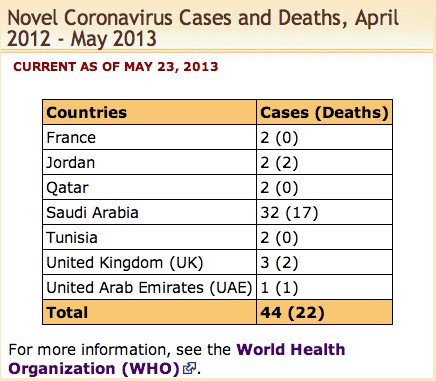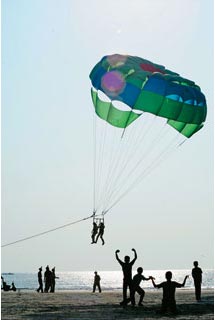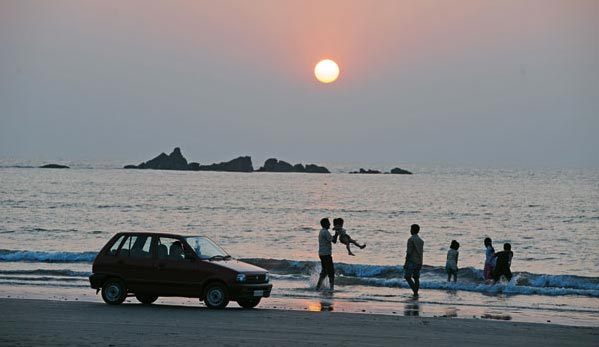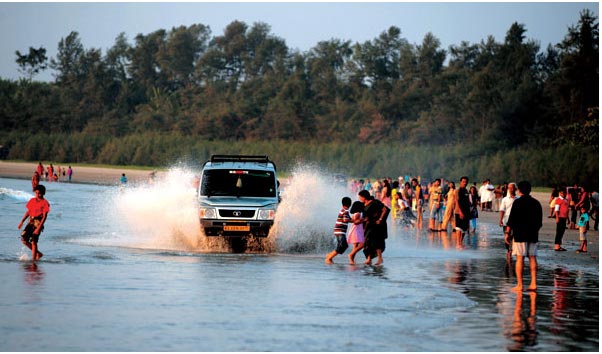The Chinese intrusion into Depsang Bulge in East Ladakh, approximately 19 km inside our perception of the Line of Actual Control (LAC) on April 15, has raised temperatures both militarily and politically on either side. A series of border personnel meetings between the militaries of the two sides have not been able to resolve the issue so far and the standoff continues till date. It would not be incorrect to presume that this latest provocation from the Chinese side has been undertaken with the tacit approval of the highest levels in the Chinese hierarchy.
As we grapple with the current situation, it has reignited introspection as to our level of preparedness should things go from bad to worse.
Fifty years have elapsed since the Chinese aggression took place in 1962. A number of articles have appeared in the media covering that period as well as the events preceding it. While there are many reasons for the Indian Army's debacle, and these have been discussed threadbare in the past 50 years, there is no doubt about the valour, courage and heroism of the Indian soldier even in the most adverse circumstances which obtained then. Given the right training, equipment and battlefield support, he is better than the best in the world. With that as the takeaway, we need to ensure that such a setback is never ever repeated.

The infrastructure on our side of the Line of Actual Control between China and India is yet to be developed fully, despite our best efforts so far.
For a realistic assessment, first and foremost, there is need for clarity on some basic issues. Many an analyst has discounted the very possibility of a future Sino-Indian conflict on the grounds that both countries stand to gain from a cooperative engagement, that trade between the two countries is increasing exponentially over time, that there is enough space for both to grow simultaneously and that both are speaking in the same voice at global forums on issues like global warming, climate change, global economy, trade barriers, etc.
It is further suggested that China already being at the global level, has more important issues like Taiwan, South China Sea and finally Pacific Ocean dominance to worry about in consonance with its stature; therefore, it would not like to get involved in a border skirmish with India.
While it is good to be optimistic, we should not veer too far away from pragmatism and reality, especially where issues of national security are concerned. The possibility of a standoff like the present one on the LAC flaring up into a bigger confrontation can never be ruled out.
There is no getting away from the fact that China has assiduously tried to create an impression that India does not figure in its scheme of things and that India's rise and growth over the past decade has little significance and in no way threatens China.
In an analysis carried out by Carnegie Endowment for International Peace in January 2013 titled "Crux of Asia: China, India and the Emerging Global Order", Ashley J Tellis and Sean Mirski highlight that "Differences in the Chinese and Indian positions sometimes arise from the two countries' competing visions but more often from their underlying geopolitical rivalry, which appears to be sufficiently deep-rooted so as to prevent the two states from realising any natural accommodation. To be sure, both sides bend over backward to conceal their differences in public, and both have often struggled to reach some accommodation that might permit occasional practical cooperation. But the differences in national power and performance between the two countries, the seeming disdain with which China treats India, and the deep fears that India harbors about China's policies and intentions lead to a never-ending contest for securing strategic advantages."
While cooperation and healthy competition are welcome and desirable, the seeds of confrontation are inherent between the two nations engaged in competition, at both the regional and global level.
Considering the fact that India is one of the few countries with which China has not resolved its long-standing boundary issue and that it has had a prolonged mutually beneficial ongoing relationship with Pakistan, the possibility of a confrontation between the two can never be ruled out.
From a national security perspective, it would, therefore, be prudent to be prepared for a threat to our territorial integrity. The last thing that India would want is a repeat of 1962!
A second issue that needs clarity is whether we expect to be subjected to an all-out, full-fledged war or a limited border war. Development of massive infrastructure in Tibet, modernisation of the PLA Army, Navy and Air Force, growth of Second Artillery and a fourfold increase in Chinese defence budget since 2000 gives it the option of indulging in an all-out war. However, given the regional and global realities, Chinese consciousness of its image as an emerging global power and the likely Chinese rationale of going to war over the boundary issue, the possibility of a limited war appears much stronger.
Thirdly, we need to introspect that while we may from time to time upgrade our operational readiness to meet the Chinese challenge, the Chinese continue to remain far ahead and we are invariably struggling to catch up. This is inevitable considering the kind of military spending China is indulging in. For the financial year 2012-13, the official Chinese military budget was $106.4 billion, the second highest in the world. As per Stockholm International Peace Research Institute (SIPRI) estimates, the actual expenditure is likely to be approximately one and a half times this figure.
As opposed to this, the Indian defence budget stood at a meagre $38 billion approximately.
In the current financial year, the official Chinese military budget is $115 billion approximately. In the span of last two decades, we have seen the PLA grow from an obsolete force, which was given a bloody nose by the Vietnamese, into a formidable, modernised and well-equipped military backed by an array of force multipliers. In the same period, the Indian military has been strenuously fighting counter insurgency battles in both J&K and the northeast and its equipment profile is nearing obsolescence. The danger is that this gap between the two is likely to keep increasing with passage of time, if past trends are any indication. Some major corrective steps are, therefore, necessary by us before it gets too late.
To begin with, it is crucial that we spend at least three per cent of our GDP on defence. Yearly shortfalls on this account can never be made up by onetime infusion at the time of a crisis.
Even during the Kargil conflict, General VP Malik, the then army chief, was constrained to say "we will fight with what we have" in the light of the shortages existing. We need to have a military which is consistently ready to face challenges to the country. National security, to ensure unhindered growth, is crucial.
With the limited resources available, we need to priortise our spending in such a manner that immediate threats are taken care of before we move on to other larger goals. It must also be appreciated that in the ultimate analysis, victory or defeat is measured in terms of real estate gained or lost. Thus, in case of a limited war with China, it is important that the Army and the Air Force who have to fight that war are allocated larger resources to begin with.
The infrastructure on our side of the Line of Actual Control (LAC) between China and India has yet to be developed fully, despite our best efforts so far. This is likely to prove a handicap in fighting a successful defensive battle. Our own environmental restrictions and prolonged land acquisition procedures need to be fine-tuned to hasten infrastructural development. Sixty-five years after independence, we are still dependent on one single, tenuous road axis in a number of crucial sectors.
Secondly, the Border Roads Organisation, which is the prime agency responsible for creating infrastructure in areas close to the LAC, is neither well-equipped and staffed nor well-organised and funded to deliver the desired results. Its functioning needs to be thoroughly reviewed and adequate funding provided to it to complete important infrastructure projects in a time-bound manner.
The possibility that in case of a conflict with China, Pakistan will not hesitate to fish in troubled waters and start something of its own on our western border also cannot be ruled out. Therefore, India has to be prepared to defend itself on both fronts and must accordingly develop its capabilities.
With a regime change in China having taken place, it would be worth India's while to work for a mutually acceptable settlement of the vexatious boundary issue. A resolution of this crucial issue would reduce the possibility of hostilities between the two countries. Further, it would avoid the threat of a two-front war, improve bilateral relations with China and enhance cooperation between the two countries on regional and global issues.
Finally, India has been consistent in following an independent foreign policy which suits our interests best. We have consciously stayed away from being part of any alignments. However, in the event of a continuously bellicose and confrontationist Chinese attitude, India should keep its options open for alignments at both the regional and global levels to meet the challenges of a hostile environment. Diplomatic alignments would be an additional hedge against avoiding a repeat of 1962.











.jpg)






